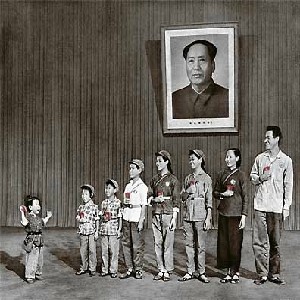Social Structure
Short Teaching Module: Letters of Milada Horáková
Horáková makes a good case study for several reasons. One of the most prominent European feminists of the first half of the 20th century, she was an active member of the resistance during the Nazi occupation of Czechoslovakia.
Letters of Milada Horáková
In this collection of letters, written by Milada Horáková before her execution in 1950 by the Communist Party in Czechoslovakia, Horáková writes last wishes and notes to her family.

Vatican Library
But the best use of this site might be to accept it as an exhibit and encourage students to wander through it themselves, stopping where they choose, so that they discover the beauty and variety of the collection.
Morning Sun
This companion site provides a wonderful introduction to 'the psycho-emotional topography of high-Maoist China.'Short Teaching Module: Memory in East Germany
This case study examines how a group of East German dissidents re-appropriated the memory of Rosa Luxemburg and turned her writing against the Communist Party during an annual parade in January 1988.
Guaman Poma - El primer nueva corónica y buen gobierno
This digital version of Guaman Poma’s manuscript provides teachers and students with an opportunity to think about the relationship between events and the way that they are recorded, and about the materials that historians use to interpret the past.Short Teaching Module: Reagan at the Brandenburg Gate
In June 1987, President Reagan delivered an important speech in front of the Brandenburg Gate in West Berlin. This case study looks at how to use the speech as a means to examine US foreign policy and the end of the Cold War.
Short Teaching Module: Women in Romania
Using oral histories, this case study explores various aspects of women’s daily lives in Communist Romania and women’s attitudes toward the changes wrought by the transformation to a pluralist system and to a market economy after the collapse of the regime in December 1989.
Activity: Simulating the Velvet Revolution
This case study simulates the process of the extraordinarily quick (and often peaceful) overthrow of various communist regimes is Eastern Europe in 1989. The simulation provides a powerful experiential study of how dissent can quickly cascade through a group, leading to fast, dramatic change.
Long Teaching Module: Solidarity Comes to Power in Poland, 1989
In retrospect, it seems predictable that the first opposition group in the Soviet bloc to succeed in unseating a communist regime would be Poland’s Solidarity movement.